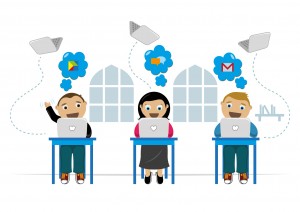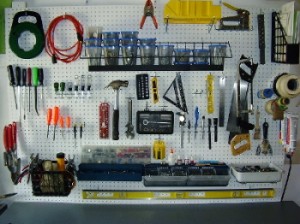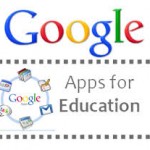 Access is obviously a challenge for empowering learning and technology in many classrooms and schools. Internet access is expensive for both the families of students, schools and teachers. “Fewer than 20 percent of teachers say their classroom’s Internet access is adequate, the White House said earlier Thursday.” http://www.newsobserver.com/2013/06/06/2941748/obama-to-lay-out-national-internet.html
Access is obviously a challenge for empowering learning and technology in many classrooms and schools. Internet access is expensive for both the families of students, schools and teachers. “Fewer than 20 percent of teachers say their classroom’s Internet access is adequate, the White House said earlier Thursday.” http://www.newsobserver.com/2013/06/06/2941748/obama-to-lay-out-national-internet.html
 Teachers don’t make much money and some do not have funds for the online access at home. When they have to pay for childcare by the hour, staying at school to access the internet eats into their income. If you don’t have access at home, there is little flexibility for teachers to access the internet after the kids go to sleep, at the local McDonald’s, at the local library, etc. The same is true of students who can’t count on transportation to places with internet access. I do believe that the Obama’s administration goals of increasing the speed of online connectivity and making online access more available will empower the US and its citizens.
Teachers don’t make much money and some do not have funds for the online access at home. When they have to pay for childcare by the hour, staying at school to access the internet eats into their income. If you don’t have access at home, there is little flexibility for teachers to access the internet after the kids go to sleep, at the local McDonald’s, at the local library, etc. The same is true of students who can’t count on transportation to places with internet access. I do believe that the Obama’s administration goals of increasing the speed of online connectivity and making online access more available will empower the US and its citizens.
- WASHINGTON, June 6 (UPI) — President Obama Thursday unveiled ConnectED, a plan to link 99 percent of America’s students to the Internet via high-speed connections within five year http://www.upi.com/Science_News/Technology/2013/06/06/Obama-announces-new-Internet-initiative-for-classrooms-educators/UPI-14591370545251/
- Obama announces new Internet initiative for classrooms, educators: http://www.upi.com/Science_News/Technology/2013/06/06/Obama-announces-new-Internet-initiative-for-classrooms-educators/UPI-14591370545251/#ixzz2YDNPOore http://www.upi.com/Science_News/Technology/2013/06/06/Obama-announces-new-Internet-initiative-for-classrooms-educators/UPI-14591370545251/#ixzz2YDM3sB6Y
- Obama wants to transform U.S. schools through faster Internet http://www.reuters.com/article/2013/06/06/us-usa-obama-internet-idUSBRE9550FF20130606
Interestingly, in my visits to Chinese schools in 2006, 2010 and 2011, student access to the internet and computers was very limited even at the better high schools. High schools are not mandatory in China and are by invitation to those who qualify. I am sure there are comparative studies of internet access around the world that might be interesting for discussions (here or elsewhere) on the importance of internet access for students in the second decade of the 21st century. It seems wise to be aware that internet access and addressing digital learners are not THE panacea and quick fix for US education. With every educational movement that embraces technology, there are many commercial entities that rush to promote that digital movement through buying their product: Camtasia software, Google Chromebooks, Apple tablets, etc.
and computers was very limited even at the better high schools. High schools are not mandatory in China and are by invitation to those who qualify. I am sure there are comparative studies of internet access around the world that might be interesting for discussions (here or elsewhere) on the importance of internet access for students in the second decade of the 21st century. It seems wise to be aware that internet access and addressing digital learners are not THE panacea and quick fix for US education. With every educational movement that embraces technology, there are many commercial entities that rush to promote that digital movement through buying their product: Camtasia software, Google Chromebooks, Apple tablets, etc.
The second challenge after access seems to be knowing what tool to use for what kind of instruction. My dad had a big garage with lots of tools. He and his father and brothers had lots of cupboards, drawers, walls and workbenches organized and labeled with many tools. I loved watching him and helping him. I would watch him trouble shoot various domestic issues (hot water heater installation, backed up drains, etc.) Part of his task was figuring out what tool could help him. As teachers, our garages of tools are growing, thankfully.
Like many of us, he probably liked buying tools just for the fun of it and for the excitement of dreaming of what they COULD do. Shopping (for household tools and digital tools) can have value as retail therapy but it can be time consuming and not always productive.
Even once my father started downsizing, he struggled with getting rid of his tools, worried that a need for them would arrive and he would not be prepared. We teachers are getting more organized with understanding how our tools work. Hurray. That is a first step. Nonetheless, we still do not always know which tool works best when. We may be using the hand screwdriver when an electric would work better. Worse yet, we may be using a screwdriver when we need a hammer. Even worse yet would be trying to use a digital tool for which a digital tool is not the best approach.
In my particular school district, we are in year three of rolling out a One-to-one laptop initiative. After bringing n Dell Netbooks into our middle schools and Lenovo Think Pads for all ninth graders, the district is switching to Lenovo Chromebooks for all students in grades 6 – 12. This will be very helpful at the high school level because bringing in laptops one year at a time is a slow turn around given that not all classes include students of a single grade level .Teachers have begun to switch their teaching styles when all students in their classes have laptops. That said, some teachers in the middle school have been so overwhelmed by the poor online behavior of students that they don’t let students bring out their computers. The slow boot up time and recharge time has been a deterrent at the middle school level. The 15 second boot-up time and battery life of Chromebooks are expected to conquer the latter two problems. The maintenance issues of updating software and managing teacher requests for software approval and installation were staggering. It is hoped that the online nature of Chromebooks eliminates those issues. In addition, the collaborative nature of Google Apps for Education is considered to be a powerful learning tool.
The promises are promising but there will be certainly be a new learning curve as teachers learn how to integrate the appropriate online tool and the appropriate collaborative activity while managing a classroom of online students.



Thanks for sharing a lot of great resources on this topic!
Amneris